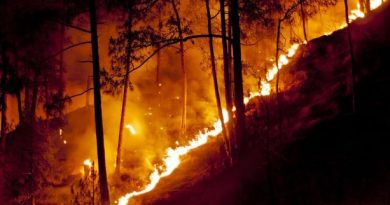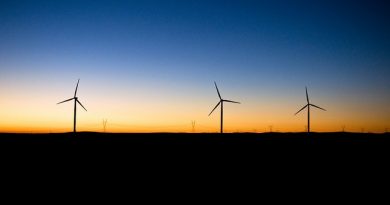IPCC’s 6th Assessment Report. Will it Be Another Milestone Of The Warnings We Ignored?
 More expensive than earlier
More expensive than earlier
Restricting global warming to 1.5°C or even 2°C will become impossible in the next decades, unless immediate, rapid and large-scale reductions in greenhouse gas emissions happen, says a new UN climate panel report. While the report has drawn the predictable reactions around the world, including India where Union Environment Minister Bhupender Yadav has described it as a “clarion call to decarbonise economies”, one wonders when the talk will convert to serious action, especially at developing countries. For now, the impact of Covid seems to have made any rational argument on the risks on continuing at our current pace impossible, as countries. Replicating the borrowing and money printing strategy followed successfully for their economies, in effect borrow from the future to take care of the present is a bad idea for Earth. After all, economies, and the money powering them, are man made. One wonders if the earth will be as forgiving as central bankers.
The IPCC’s Sixth Assessment Report (AR6) “Climate Change 2021: The Physical Science Basis” shows that greenhouse gases from human activities are responsible for 1.1C of warming since the second half of the 19th century that are an “unequivocal” result of human actions.
On the one hand, modern society’s continued dependence on fossil fuels is warming the world at a pace that is unprecedented in the past 2,000 years — and its effects are already apparent as record droughts, wildfires and floods devastate communities worldwide. And very measurable rise in carbon concentrations in the atmosphere. On the other hand, the pledges to cut emissions made by world leaders so far are nowhere near enough to start reducing level of greenhouse gases – mostly carbon dioxide (CO2) from burning fossil fuels – accumulated in the atmosphere. The focus is still on arresting rise, rather than any meaningful reduction.
U.N. secretary general Antonio Guterres described the report as “code red for humanity” and a “death knell for coal and fossil fuels, before they destroy our planet.” That death knell has been preceded by an ongoing death sentence for vast parts of the biodiversity on earth, be it corals at sea, or thousands of species of plants and animals that are disappearing as we read this.
IPCC
Established in 1988 by the United Nations Environment Programme (UNEP) and the World Meteorological Organization, the Intergovernmental Panel on Climate Change (IPCC) provides global policymakers with periodic, scientific assessments of climate change to guide national and global policies, including options for adaptation and mitigation.
The Sixth Assessment Report
The newly released “Climate Change 2021: The Physical Science Basis,” is one part of the IPCC’s sixth assessment report, the release of which was delayed by almost a year due to COVID-19, and covers the physical science basis of climate change.
This report is the most up-to-date assessment of climate science today based on more than 14,000 papers examined by over 234 leading scientists across 60 countries over five years. The IPCC reports, the last of which was released in 2013, generally don’t offer any policy recommendations. This study, however, uses strong language to squarely lay the blame for climate change and extreme weather events on human activities. Some of the report’s findings are as follows:
Global Impact
Scientists are observing changes in the Earth’s climate in every region and across the whole climate system. Global warming levels are likely to exceed 1.5°C or even 2°C in the next decades unless there are immediate, rapid and large-scale reductions in greenhouse gas emissions. The report notes that the effects of warming are varied. For instance, warming over land is larger than the global average, and it is more than twice as high in the Arctic.
U.S. President Joe Biden has tweeted, “We can’t wait to tackle the climate crisis. The signs are unmistakable. The science is undeniable. And the cost of inaction keeps mounting.”
“The evidence is everywhere: if we don’t act, the situation is going to get really bad,” says Xuebin Zhang, a climatologist at Environment Canada in Toronto, Ontario, and a coordinating lead author on the report.
Rising temperature is not the only cause for concern; climate change is bringing multiple different changes in different regions. These include alterations in water and weather cycles, which result in changes to wet and dryness, to winds, snow and ice, coastal areas and oceans. The report notes the following:
- Climate change is affecting rainfall patterns. In high latitudes, precipitation is likely to increase, while it is projected to decrease over large parts of the subtropics. Changes to monsoon precipitation are expected, which will vary by region.
- Coastal areas will see continued sea level rise throughout the 21st century, contributing to more frequent and severe coastal flooding in low-lying areas and coastal erosion. Extreme sea level events that previously occurred once in 100 years could happen every year by the end of this century.
- Further warming will amplify permafrost thawing, and the loss of seasonal snow cover, melting of glaciers and ice sheets, and loss of summer Arctic sea ice.
- Changes to the ocean, including warming, more frequent marine heatwaves, ocean acidification, and reduced oxygen levels have been clearly linked to human influence. These changes affect both ocean ecosystems and the people that rely on them, and they will continue throughout at least the rest of this century.
- For cities, some aspects of climate change may be amplified, including heat (since urban areas are usually warmer than their surroundings), flooding from heavy precipitation events and sea level rise in coastal cities.
The report further says that climate events like those caused by sea-level rise, which would happen once in a century earlier, could begin to take place once every year.
U.K. Prime Minister Boris Johnson said the “sobering” report makes it clear the world must “consign coal to history and shift to clean energy sources, protect nature and provide climate finance for countries on the frontline.”
Impact on India
The report shows that future of India and the subcontinent comprises of increasing heat waves and droughts, rainfall events and a likelihood of more cyclonic activity.
“Given that India is one of the most climate-vulnerable countries, we must recognise that even geographically faraway climatic changes can have consequences for our monsoons and intensity of extreme events,” said Dr Arunabha Ghosh, CEO, Council on Energy, Environment and Water (CEEW).
Speaking of extreme changes in the country’s rainfall, Dr Swapna Panickal of the Pune-based Indian Institute of Tropical Meteorology, one of the authors of the report, said that in the Indian Ocean, the sea temperature is heating at a higher rate than other areas and therefore may influence other regions. The South West Monsoon has declined over the past few decades because of the increase of aerosols, but once this reduces, we will experience heavy monsoon rainfall. The global mean sea level in the Indian Ocean is rising at 3.7 mm annually. Extreme sea-level events, that previously occurred once every 100 years, will now be seen nearly every year, she added.
The report notes that the presence of aerosols and particulate matter due to human activity have influenced rainfall events in the Indian subcontinent. The dominant cause of the observed decrease of South and Southeast Asian monsoon precipitation since mid-20th century is the increase in aerosols and particulate matter due to human activity. In the long-term, South and Southeast Asian monsoon and East Asian summer monsoon precipitation will increase, predicted the study.
Heat waves and humid heat stress in India will be more intense and frequent in the 21st century. Changes in monsoon precipitation are also expected, with both annual and summer monsoon precipitation projected to increase. The report says, heat extremes have increased while cold extremes have decreased, and these trends will continue over the coming decades.
India’s environment minister Bhupender Yadav took aim at wealthier countries and said the report “reaffirms” India’s position that they are responsible for the climate crisis, adding that the report should serve as a “clarion call for the developed countries to undertake immediate, deep emission cuts.”
Future: Is there one?
The report shows that human actions still have the potential to determine the future course of climate. The evidence is clear that carbon dioxide (CO2) is the main driver of climate change, even as other greenhouse gases and air pollutants also affect the climate.
“Stabilizing the climate will require strong, rapid, and sustained reductions in greenhouse gas emissions, and reaching net zero CO2 emissions. Limiting other greenhouse gases and air pollutants, especially methane, could have benefits both for health and the climate,” said Chinese climatologist Panmao Zhai who is one of six co-chairs of the IPCC.




